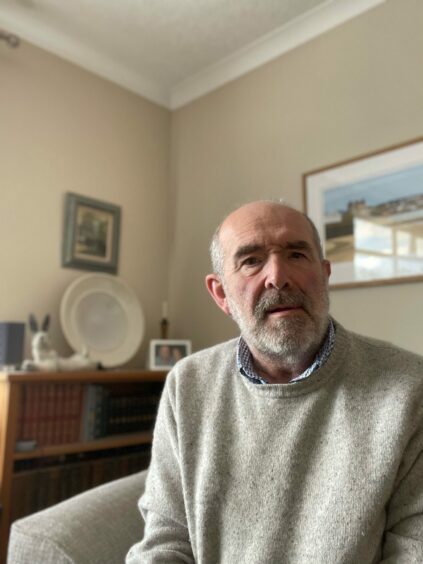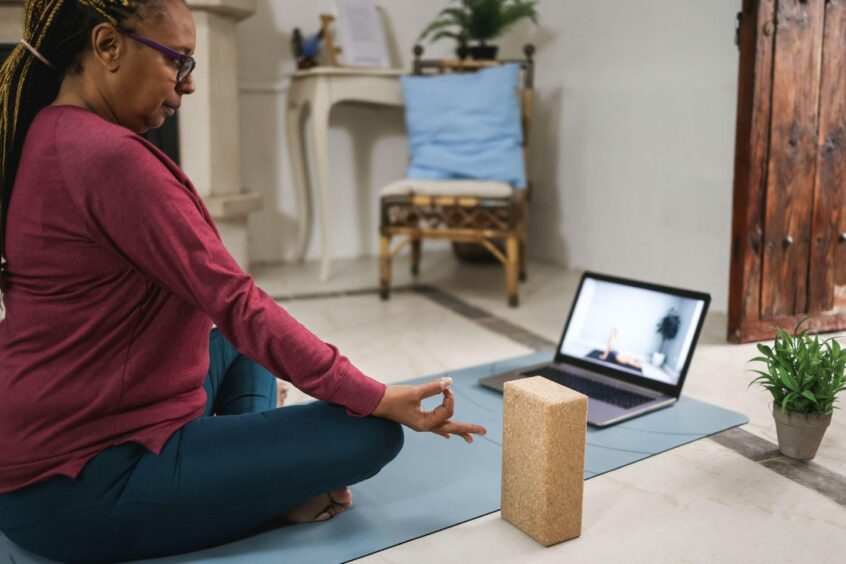Every hour in the UK, two people are diagnosed with Parkinson’s. That includes younger adults – and they don’t always have the tell-tale tremor.
While a number of celebrities have helped draw attention to the condition – including the late Muhammad Ali and actor Michael J. Fox – there remains a lot of misunderstanding about Parkinson’s, which occurs when a person’s brain doesn’t produce enough dopamine, because the nerve cells that make it have died – resulting in a wide range of symptoms.
There’s no cure and Parkinson’s is progressive, but treatments can help, and charities such as Parkinson’s UK are fighting to improve this.
We asked two people living with Parkinson’s to share what they want everyone to know.
1. It doesn’t just affect older people
“I was 46 when I was diagnosed,” says Sarah Sykes. “I’m 47 now, and I think the first myth [about Parkinson’s] is that it’s only old people that get it.” According to the NHS, one in 20 people with the condition first experience symptoms before the age of 40.
2. It’s not all about tremors
“When I got diagnosed, all I could think of was somebody shaking,” Sykes admits. John Hinson, 59, says a reaction he frequently gets when he tells people he’s got Parkinson’s, is: “Oh, you can’t tell, because you don’t shake.”
Tremor, or involuntary shaking, is one of the main symptoms associated with Parkinson’s – but there are more than 40 known symptoms, ranging from problems with sleep, motor skills and dexterity, to muscle stiffness, pain and “freezing”, where you feel like your feet are glued down and you can’t move.
3. Diagnosis can be a shock
Sykes experienced symptoms for a few years before going for tests – and it was a “shock” to discover it was Parkinson’s. “For a couple of years, I’d been walking with a limp. Then my handwriting started getting smaller, and I had a frozen shoulder a few times,” Sykes recalls.
There’s no single definitive test for Parkinson’s. Sykes had scans to rule out other conditions, before being assessed for Parkinson’s. The final diagnosis came when she was given medication to see if it worked.
4. It affects mental health too
“Depression and anxiety are a main feature of the condition as well,” says Hinson. In fact, depression can sometimes be one of the earliest symptoms people notice, alongside physical signs.
Living with Parkinson’s can bring additional emotional and psychological challenges too, particularly due to worries about it progressing and the impact that may have.
5. The fatigue is real
Fatigue isn’t “normal” tiredness people can push through – it’s a very real symptom that can be overwhelming. “I get very tired very quickly,” says Sykes. “My neurologist said, ‘Your brain is working harder than everybody else’s brain’. Fatigue is definitely a part of it.”
6. There can be big financial worries
“I still had kids at university [when I was diagnosed], so the financing of that became a bit of a worry,” says Hinson. Parkinson’s may result in loss of income and ability to work, which he says can be particularly worrying if you are diagnosed young.
When Hinson eventually applied for benefits, the process took 18 months: “Luckily, I was able to afford to live, but if you didn’t have any money coming in, waiting for that would be very [difficult].”
7. But some people with Parkinson’s can still work
Some people may still be able to work – however, having supportive employers can make a world of difference. “My employer has been fantastic,” says Sykes. “They’ve let me change my hours, so I do less.”
8. Patience goes a long way
People with Parkinson’s might move slowly and take more time with fine motor tasks, like getting money out of a wallet. Hinson says it would be helpful if others could be more patient – especially as you never know what invisible health condition somebody might be living with.
9. Being accused of being drunk can be hurtful
Hinson recalls a ticket inspector on a train accusing him of being drunk, while he was attempting to retrieve his ticket. “It happens to people with Parkinson’s quite often,” he says, due to symptoms such as slowness, staggering and dribbling or slurred speech. “I said in a rather loud voice, ‘I’ve actually got Parkinson’s’. I found it quite upsetting, really.”
10. There are reasons to be hopeful
“Some days, it’s very hard. Especially when you think about what could happen in the future,” says Sykes. “But there are reasons to be hopeful. Medication has made my life a lot more manageable. I can handwrite now, and my walking is better.”
Self-care has also been important for Sykes – she’s keeping active, does yoga, has taken steps to improve her diet, and staying connected with friends has helped her too. “Your friendships are very important. I’ve got some really good friends, a lovely husband and a lovely daughter, who’s 13,” she says. “And we’ve planned lots of holidays, I’ve got a cruise in July. I’m just fitting into my life what I can, and keeping my brain active.”
See parkinsons.org.uk






